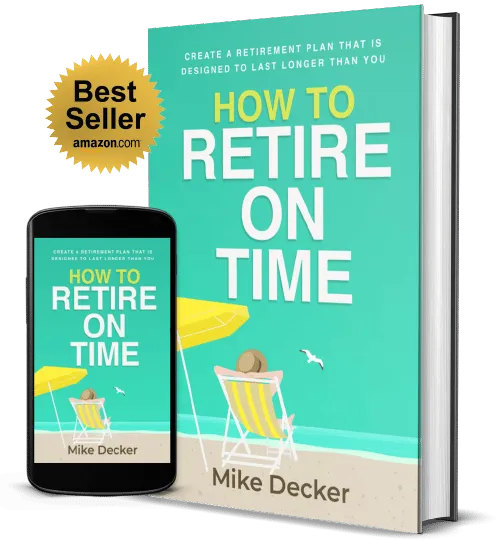For those who enjoy their research…
Articles & Press
Read our articles, some written for other publications, others written exclusively for the Kedrec audience.

What Is Absolute Return Theory? Three Ways You Can Try It
This article was originally written for Kiplinger.
When you consider investing in the market, your mind probably goes to low-cost index funds. Even a small amount of money can be invested and gain exposure to a significant amount of diversification.
In the words of Warren Buffett, “Diversification is only required when the investors do not understand what they are doing.” For those who don’t have time to research each investment or don’t want to manage their portfolio on a daily basis, buying and holding low-cost mutual funds and ETFs can be a great option.
This strategy is based on what is called “relative return theory.” Simply put, relative returns refer to placing assets in a fund, whether it is a mutual fund or an ETF, that mimics, for better or for worse, the performance of an index like the S&P 500. Whatever the S&P 500 does, in this example, is similar to what you get. The return is relative.
However, there is a different way to look at the markets and your returns. Many do not know it exists. I’m not saying it is better or worse than relative return investment strategies. My purpose in writing this article is to introduce this alternative investment theory so you can decide whether it is right for you.
What is absolute return theory?
In a nutshell, absolute return seeks to make money during a specific period of time, regardless of market conditions. Admittedly, it is easier said than done. I am not claiming that anyone can successfully time the market. The data is clear that it is generally better to have time in the market than try to time the market.
I am not claiming that “absolute return” means “absolute positive return” or “absolute guaranteed return.” Investment models based on absolute return theory can produce negative returns, just like relative returns. All I’m suggesting is that there is a different way to look at the market and your investments.
Absolute return is a more intentional and sophisticated approach to investing. If you take a close look at different hedge funds or endowments, such as the Yale Endowment, you will find a significant portion of their portfolio is dedicated to absolute return. Normally, absolute return models consist of options, derivatives, leverage, short selling, futures and other unconventional assets. These instruments may not be appropriate for the typical investor. Also, many Americans can’t meet the often multimillion-dollar account minimums to get access to these sophisticated models.
However, absolute return theory isn’t reserved only for the ultra-wealthy. Here are three examples of how you can implement absolute return theory into your portfolio:
1. Quality over quantity
You probably don’t need all 500 stocks in the S&P 500 and all 2,000 stocks in the Russell 2000 in order to have a good portfolio. Instead, pick the stocks of good companies that you understand and believe will do well over a long period of time.
As the late Charlie Munger put it, “The idea of excessive diversification is madness. Wide diversification, which necessarily includes investment in mediocre businesses, only guaranteed ordinary results.”
Pick what you know and understand. Then hold them. Your expected return should not be based on an annual basis. It must be based on a certain, predetermined period of time. Your stocks will most likely go up and down throughout the year. However, if they are good companies that offer good products and services, they offer the opportunity to eventually produce desirable results. You don’t need to be fancy, just deliberate.
2. Trend-following models
Within any given market, you can typically find a certain amount of momentum one way or another. Investors who subscribe to trend-following algorithms try to find and capture that momentum through signals. These signal-calling models typically take in information, like moving averages, market breadth, trade volume and so on, to attempt to quantify whether the investors should buy or sell a particular stock at a particular time or price. Some models may even tell you when to short a certain stock or fund (or purchase an inverse fund).
Unlike mutual funds and ETFs, these models can tell you when to go to cash. Remember, these models, like any other investment strategy in the market, can lose money. There are unique potential benefits and detriments (risks) that should be explored before implementing these types of models. Some money management firms, like my firm, Kedrec, have their own proprietary models. Other investors search places like Timer Trac to find managers who offer models directly to the public.
3. Multimarket diversification
Consider placing some of your assets in investments outside of the stock/bond market. For example, consider the alternative space, which includes real estate, private equity and more. J.P. Morgan Asset Management recently conducted a study that found that when investors allocated 30% of their typical stock/bond portfolio into alternative investments, historically speaking, it helped increase annualized returns while decreasing annualized volatility.
Past performance is not indicative of future results. It does present an interesting argument against the timeless 60/40 stock-bond split. Make sure you understand the technical side of alternative investments before investing.
In conclusion
No one knows the future. There’s nothing wrong with the relative return theory, in my opinion. However, it is important to at least understand that absolute return exists and that it is available to average investors, not just those who can afford the $2 million minimum. Making informed decisions about picking stocks you understand, or following signals you trust, or diversifying outside your typical markets may help support your long-term investment goals, even in a flat market cycle.
Investing involves risk, including possible loss of principal. No investment strategy can ensure a profit or guarantee against losses. This information is presented for educational purposes only and should not be construed as investment advice or a recommendation to your unique situation. Absolute return models involve unique risks, which you should review carefully before investing.
Investment advisory services are offered through Kedrec, LLC, a Kansas state Registered Investment Advisor.
Ready To Get Your House In Order?
Click the button below and tell us what you want.
Our comprehensive services are designed to help you fully experience life (financially, at least).
CREATE A RETIREMENT PLAN DESIGNED TO LAST LONGER THAN YOU
HOW TO RETIRE ON TIME
In this book, you'll discover:
How to run the numbers and see when you can afford to retire (It’s easier than you think).
Learn why many common retirement income strategies may be riskier than you realize.
Discover proprietary retirement income strategies that may be able to help you have more control over your income while potentially lowering your risk.
How to proactively anticipate and manage your retirement during the market's ups and downs.
Why it’s typically not too late to course-correct. If you have already retired, there’s still time to get on the right path.
And much more!

This book is a marketing publication for Kedrec, LLC

Explore Your Lifestyle and Legacy Potential
This content on this website is provided for informational purposes only and is not intended to serve as the basis for financial decisions. It should not be construed as investment advice or a recommendation.
Investment advisory services are offered through Kedrec, LLC, a Kansas state Registered Investment Advisor. Insurance products and services are offered through its affiliate, Kedrec Legacy, LLC. We are not affiliated with the US government or any governmental agency.
Investing involves risk, including possible loss of principal. No investment strategy can guarantee success, ensure a profit or guarantee against losses. Insurance product guarantees are backed solely by the financial strength and claims-paying ability of the issuing company.
Insurance and annuity products involve fees and charges, including potential surrender penalties. Annuity withdrawals are subject to ordinary income taxes and potentially a 10% federal penalty before age 59-1/2. Life insurance generally requires medical and potentially financial underwriting to qualify for coverage. Optional features and riders may entail additional annual cost. Product and feature availability may vary by state.
Tax, legal and estate planning services are available only to members who purchase the Fresh Wealth Plan Membership level. Tax, legal and estate services provided by our network of tax and legal professionals. Always consult with qualified tax/legal advisors regarding your unique circumstances.
This content on this website is provided for informational purposes only and is not intended to serve as the basis for financial decisions. It should not be construed as investment advice or a recommendation.
Investment advisory services are offered through Kedrec, LLC, a Kansas state Registered Investment Advisor. Insurance products and services are offered through its affiliate, Kedrec Legacy, LLC. We are not affiliated with the US government or any governmental agency.
Investing involves risk, including possible loss of principal. No investment strategy can guarantee success, ensure a profit or guarantee against losses. Insurance product guarantees are backed solely by the financial strength and claims-paying ability of the issuing company.
Insurance and annuity products involve fees and charges, including potential surrender penalties. Annuity withdrawals are subject to ordinary income taxes and potentially a 10% federal penalty before age 59-1/2. Life insurance generally requires medical and potentially financial underwriting to qualify for coverage. Optional features and riders may entail additional annual cost. Product and feature availability may vary by state.
Tax, legal and estate planning services are available only to members who purchase the Fresh Wealth Plan Membership level. Tax, legal and estate services provided by our network of tax and legal professionals. Always consult with qualified tax/legal advisors regarding your unique circumstances.


